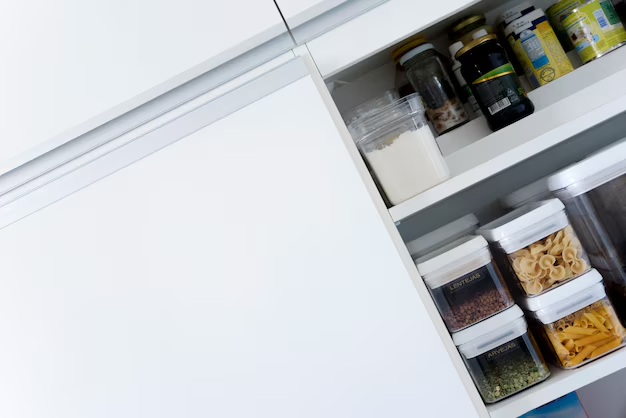Fresh Catch Guide: How Long Can Fish Be Refrigerated for Maximum Freshness?
Fresh fish is a prized culinary ingredient, known for its delicate flavors and versatility in the kitchen. However, improper storage can quickly turn this delicacy into a disappointment. If you've ever wondered how long you can keep fish in the refrigerator without sacrificing quality, you're in the right place. This comprehensive guide will provide you with the knowledge you need to store fish safely, maintain its freshness, and maximize its shelf life.
🐟 Importance of Proper Fish Storage
Fish, being a highly perishable food item, requires careful handling from the moment it's caught until it reaches your plate. Its delicate flesh and high moisture content make it prone to spoilage and bacterial growth. Proper storage practices help retain the quality, safety, and nutritional value of fish.
Key Reasons for Storing Fish Correctly
- Prevention of Spoilage: Spoiled fish develops an unpleasant odor and taste, making it unappetizing and unsafe to eat.
- Preservation of Nutrients: Fresh fish is rich in Omega-3 fatty acids and proteins that degrade if not properly stored.
- Ensuring Safety: Proper storage minimizes the risk of foodborne illnesses caused by bacteria such as Salmonella or Listeria.
🧊 Optimal Refrigeration Practices for Fish
When it comes to storing fish in the refrigerator, several factors determine how long it will remain fresh. These include the type of fish, its condition, and how it is stored.
General Guidelines
- Timing: Ideally, fish should be consumed within 48 hours of purchase. If not, freezing is the best option for extended preservation.
- Temperature: Store fish in the coldest part of your refrigerator at a temperature of 32°F (0°C) to 38°F (3°C).
- Packaging: For best results, wrap the fish tightly in plastic wrap or aluminum foil, and place it in a shallow container to catch any drips.
Fresh vs. Cooked Fish
- Fresh Fish: Fresh, raw fish should be consumed or frozen within one to two days. A quick sniff test can help; fresh fish should smell like the sea, not "fishy."
- Cooked Fish: Cooked fish can be refrigerated for three to four days. Make sure it is stored in an airtight container and reheated properly to retain its original flavor and texture.
🍣 Different Fish, Different Rules
Not all types of fish are created equal when it comes to refrigerator storage. Some varieties are more delicate than others and require heightened attention.
Oily vs. Lean Fish
- Oily Fish: Varieties such as salmon, mackerel, and sardines have a higher fat content that can turn rancid more quickly. These should be eaten within two days of purchase.
- Lean Fish: Cod, flounder, and tilapia, being less oily, can last slightly longer while preserving quality—typically up to three days.
Shellfish Considerations
- Shrimp and Crab: These should ideally be consumed within one to two days. Their higher vulnerability to temperature changes makes quick consumption advisable.
- Clams and Oysters: With shells intact, these can last up to five days in the refrigerator if kept in a breathable container, like a netted bag, to allow them to stay alive longer.
❄️ When in Doubt, Opt for Freezing
If you find that you're unable to use the fish within the recommended timeframe, freezing is a worthwhile option. Proper freezing can extend fish's shelf life and safeguard against spoilage.
Freezing Tips for Fish
- Pre-Freezing Prep: Rinse fresh fish under cold water and pat dry with paper towels. This removes surface bacteria and maintains texture.
- Packaging for the Long Haul: Wrap the fish tightly in moisture-proof freezer paper or a vacuum-sealed bag to prevent freezer burn.
- Labeling: Always label packages with the date and type of fish for easy identification later.
Defrosting Techniques
- Refrigerator Thawing: Transfer frozen fish to the refrigerator about 24 hours before you plan to use it. This ensures a slow, even thaw, preserving moisture and flavor.
- Cold Water Bath: For quicker defrosting, place the sealed fish in cold water. Change the water every 30 minutes, preparing it for cooking in a few hours.
⚠️ Signs of Fish Gone Bad
Knowing how to recognize spoiled fish is crucial to ensuring food safety. Awareness of the following can guide you in making informed decisions:
Visual and Sensory Cues
- Color and Texture: Fresh fish should be firm to the touch with a natural, vibrant sheen. Dull or discolored spots signal degradation.
- Smell: A pungent fishy odor is a red flag; fresh fish should smell like saltwater or a mild marine scent.
- Appearance of Eyes and Gills in Whole Fish: Bright, clear eyes and reddish-pink gills indicate freshness. Cloudy eyes and grayish gills are signs of spoilage.
📝 Quick Summary Section
Fish Storage at a Glance 📝
- Ideal Refrigeration Time: 1-2 days for fresh fish, 3-4 days for cooked fish.
- Oily Fish: Best consumed within 2 days.
- Lean Fish: Can last up to 3 days.
- Shellfish: 1-2 days for shrimp/crab, up to 5 days for clams/oysters in shells.
- Freezing: Wrap tightly and label; thaw in the refrigerator or cold water.
- Check for Freshness: Firm texture, sea-like smell, and natural color are signs of quality.
🌟 Maximizing Freshness & Safety
The key to enjoying fish at its finest is timely consumption and using proper storage techniques to keep your catch from turning bad. Stay proactive by organizing your refrigerator, clearly labeling stored items, and understanding the specific needs of different fish varieties. With these practices, you can relish the flavors and benefits of fish while ensuring food safety in your home kitchen. Happy cooking and safe eating!
